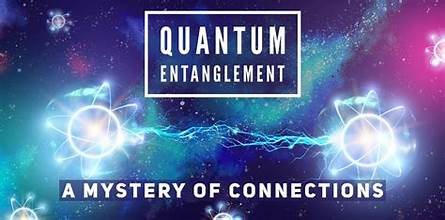Quantum entanglement is one of the most intriguing phenomena in quantum physics, offering a profound insight into the nature of reality itself. This phenomenon, which Albert Einstein famously referred to as “spooky action at a distance,” is crucial to the future of quantum communication. In this article, we’ll explore what quantum entanglement is, its implications for quantum communication, and why it is considered a cornerstone of this revolutionary technology.
What is Quantum Entanglement?
Quantum entanglement occurs when two or more particles become interlinked in such a way that the state of one particle instantly influences the state of the other, regardless of the distance separating them. This means that if you measure the state of one entangled particle, you instantly know the state of its partner. This phenomenon defies classical concepts of space and time and has been experimentally verified numerous times.
How Quantum Entanglement Works
To understand quantum entanglement, consider a pair of particles that interact and then separate. These particles can become entangled, meaning their quantum states are linked. If you measure a property of one particle, such as its spin, the result will immediately affect the measurement of the same property in the other particle, even if they are light-years apart.
The key to entanglement lies in the concept of quantum superposition. Before measurement, particles exist in a superposition of states. Upon measurement, they collapse into a definite state. Entangled particles, however, maintain a correlation that remains intact across distances, a phenomenon that puzzled even Einstein.
Quantum Communication and Entanglement
Quantum communication leverages the principles of quantum entanglement to enable secure and efficient information transfer. Here’s how it works:
- Quantum Key Distribution (QKD): One of the primary applications of entanglement in quantum communication is Quantum Key Distribution. QKD uses entangled particles to establish a secure communication channel between two parties. By comparing measurements on entangled particles, they can detect eavesdropping and ensure that the communication remains private. This is possible because any attempt to intercept the particles disrupts their entanglement, signaling an intrusion.
- Quantum Teleportation: Quantum teleportation is another application where entanglement plays a vital role. This process allows the transfer of quantum information between distant locations without physically transmitting the particles themselves. Instead, the state of a particle is transferred from one location to another through entanglement and classical communication.
- Quantum Networks: The development of quantum networks relies on entanglement to connect quantum computers and other devices. By establishing entangled links between nodes in a network, information can be transmitted with high security and potentially faster than classical methods.
The Significance of Quantum Entanglement
The significance of quantum entanglement in quantum communication cannot be overstated. It promises several advantages over classical communication methods:
- Security: Quantum communication provides unprecedented levels of security. The principles of quantum mechanics ensure that any eavesdropping attempts are detectable, making the communication virtually immune to interception.
- Efficiency: Quantum communication systems can potentially transmit information more efficiently than classical systems, especially when combined with advancements in quantum computing and networking.
- Future Applications: As quantum technologies evolve, entanglement will likely play a critical role in developing advanced quantum networks, secure communication channels, and quantum computing systems.
Challenges and Future Directions
While quantum entanglement offers remarkable potential, several challenges need to be addressed:
- Scalability: Creating and maintaining entangled states over large distances and between multiple nodes in a network is technically challenging. Advances in quantum technology are needed to overcome these hurdles.
- Technological Integration: Integrating quantum communication technologies with existing infrastructure and systems requires significant research and development.
- Cost: The cost of developing and deploying quantum communication systems can be high. However, as technology advances and becomes more widespread, these costs are expected to decrease.
Conclusion
Quantum entanglement is a fundamental concept in quantum mechanics with profound implications for the future of communication. By harnessing the power of entanglement, quantum communication promises to revolutionize information security and efficiency. As research and technology progress, the potential applications of quantum entanglement will continue to expand, offering new opportunities and challenges in the realm of quantum communication.





